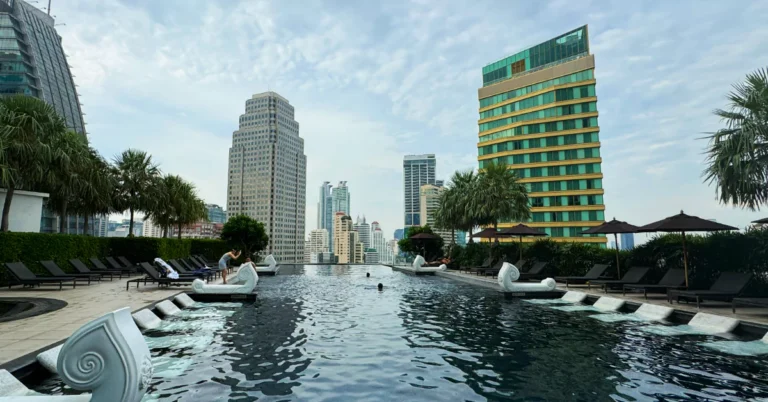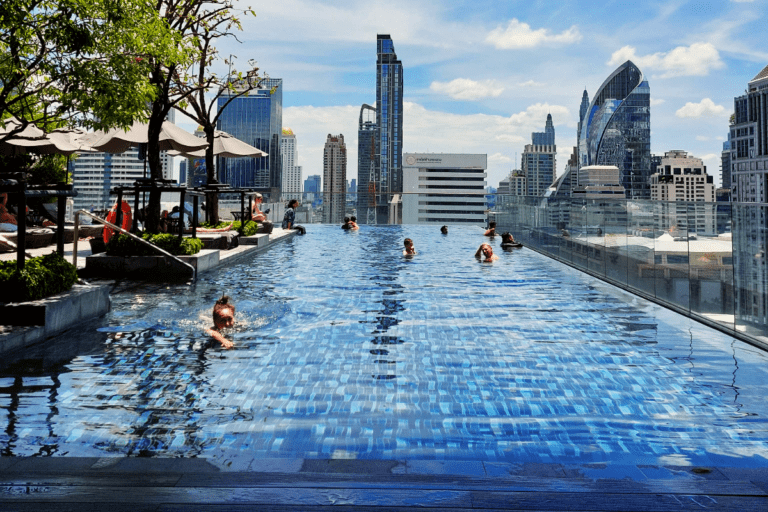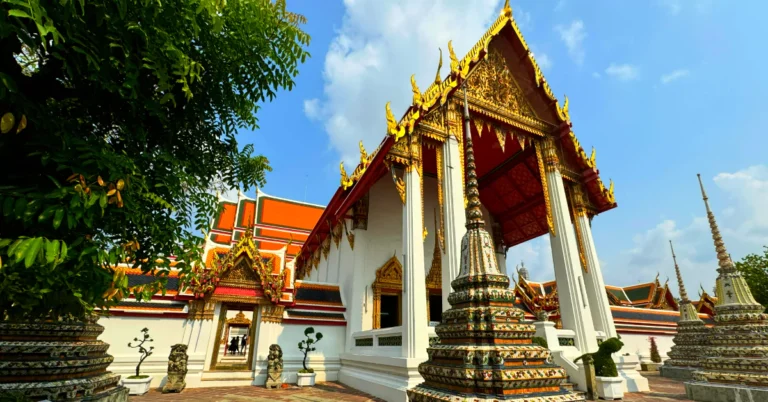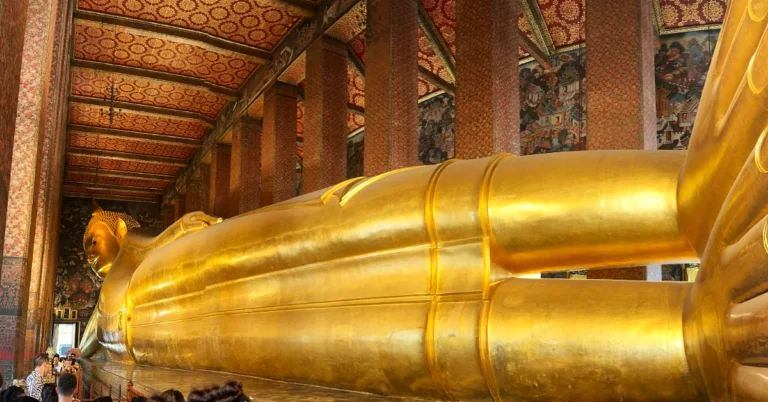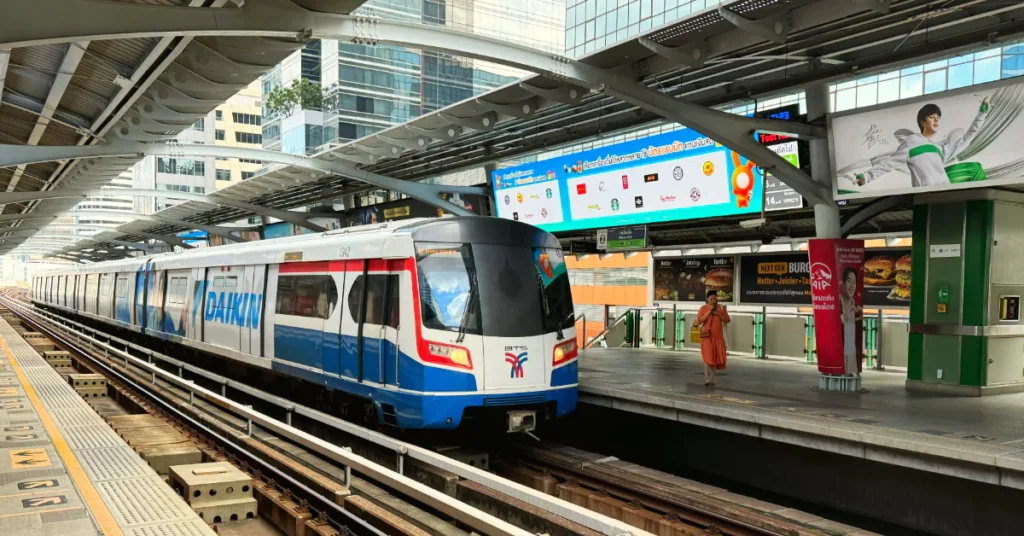
Bangkok has a great public transport system and once you get the hang of it, it’s super easy to use and get around with. And while yes, we also love the convenience of apps such as a Grab and Bolt, traffic jams in Bangkok are no joke. Luckily, that’s where Bangkok’s excellent public transit system comes in plane.
In this Bangkok Public Transport guide we’ll discuss each mode of transportation and we’ll tell you how to pay the fare.
This post contains affiliate links. If you make a purchase through them we may earn a small commission at no extra cost to you.
Public Transport Options in Bangkok
Bangkok has an extensive network of public transit, with the most popular options amongst travelers being the BTS Skytrain (which zooms over the busy streets) and the Blue MRT metro line. However using other options such as the bus and the river boats can be a great way to really discover local life in Bangkok.
The BTS Skytrain
The Bangkok Sky train, also known as the BTS, is one of the easiest and most convenient ways of traveling in Bangkok. When to roads are crowded with cars, the elevated Skytrain will have you zooming through the busiest parts of Bangkok in no time.
How to use the Bangkok BTS
The two lines you’ll most like use are the light green (Sukhumvit line) and the dark green line (Silom line). The light green line brings you to all the must-see places around the popular Sukhumvit areas and the dark green line is great for exploring Silom and Lumphini park. These two lines connect at Siam station.
There’s no line getting into the old town (yet), so for exploring Bangkok’s famous temples and riverside area you’ll need to rely on other modes of transport. But more on that later.
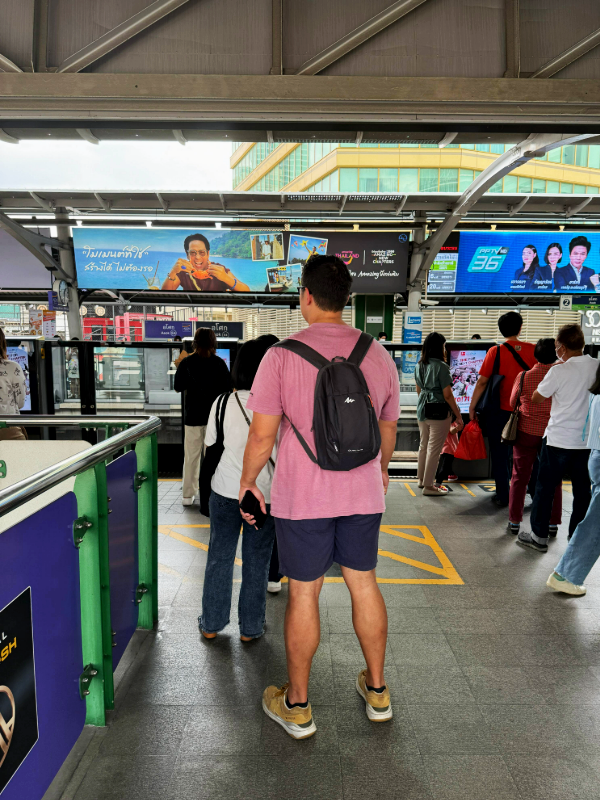
How to buy tickets for the BTS
There are two payment methods to buy a ticket for the BTS. The first option is to pay by cash at one of the machines or at the ticket desk.
You can not pay for the BTS with a foreign debit or credit card. They do however accept QR-code payment,s but this is mainly for locals with a Thai bank account plus few Asian countries who also support Prompt Pay QR-code payments.
The second option is to get a rabbit card. This transport card is available at the ticket desk upon presentation of your passport and a 50 Baht deposit. You can then put some cash on it and simply check-in and out every time you want to go somewhere. This is a great time saver if you’re looking to travel around rush-hour, since the machines can get very crowded. Especially at popular stations such as Siam and Asok.
BTS Skytrain ticket prices
If you’re only staying in Bangkok for a few days then paying by cash is by far the easiest option. Simply go up to the machine, enter your destination, throw in some coins and voilà you’ll have a single-use ticket. The machines are available in English and each station is numbered, making the it very easy to navigate.
Single BTS ticket prices range from 17 Baht to 49 Baht per journey for an adult.
If you’re looking to travel all day you can also buy a one-day pass. A day pass costs 150 Baht per person and is only valid on the light- and dark green line.
You can also purchase a Rabbit Card before arrival online and pick it up when you arrive at the airport. Do note that the BTS does not connect to the airport, so you can’t use it straight away.
The MRT
Another fast and easy way to discover Bangkok is by metro, which is also known as the MRT. Although not as spectacular as the Skytrain, we do really love using the metro line in Bangkok. It’s fast, affordable and it gets you to parts of the city that the Skytrain isn’t connected to. For example, you can best use the MRT to reach the enormous Chatchuchak Weekend market or Bangkok’s famous China Town.
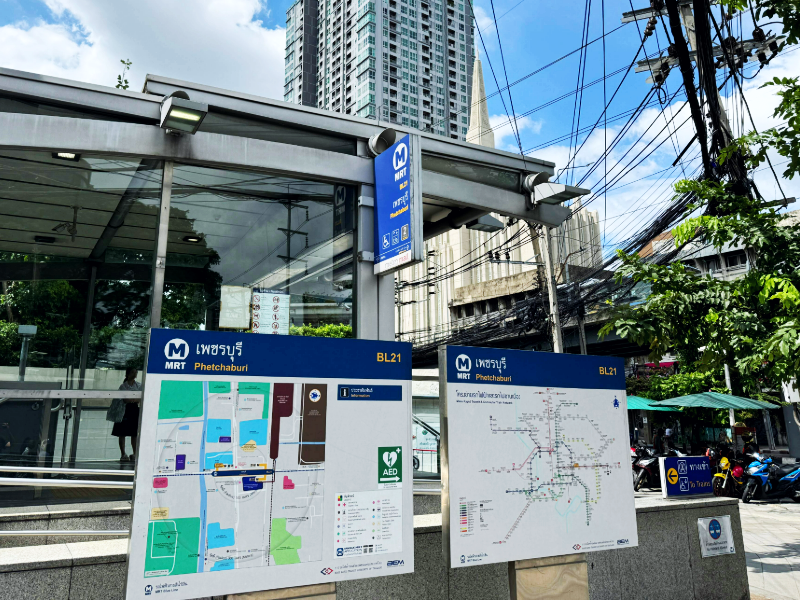
How to use the MRT and buy tickets
As for MRT payment methods you can use your debit card, credit card or cash. The best part is you don’t even need to stand in line for a ticket.
By far the easiest way to use the MRT is to tap in with your credit card when you enter the station and simply tap out when you arrive at your destination. The fare will be deducted from your card a few days later.
The only downside is that every traveler needs their own card to tap in and out, so if you’re traveling with children for example it’s best to buy a single ride token at the machine or at the ticket desk. You’ll need the token again to exit at your destinations, so be sure to hold on to it!
Adult fares start at 17 baht and go up to around 45 baht for a single ride on the MRT Blue line, which is the line you’re most likely to use. Children and those who are 60 years of age or older are entitled to a 50% discount.
Using both the MRT and the BTS
The MRT and BTS connect at multiple stops such as the Sala Daeng BTS <-> Silom MRT and at Asok BTS <-> Sukhumvit MRT. This makes it even more convenient to get everywhere you want to go. Do keep in mind that you can’t use the same ticket for the BTS and MRT yet, and that each require a separate ticket.
Bonus tip: If you plan on using public transport in Bangkok a lot we recommend to book your accommodation close to either Asok / Sukhumvit or Sala Daeng / Silom. Click here to read more about Bangkok’s different areas to stay.
The Bus
Traveling by bus can be confusing. They can suddenly go in a wrong direction or leave you stranded in an unfamiliar place. That’s why riding the bus in a foreign city is the ultimate travel challenge, and if there’s one city that will prove that to you it’s Bangkok. At the same time you get to see large parts of the city that isn’t covered by other modes of public transport and that allows you to explore much more off the beaten-path.
Buses are mostly ran by the BMTA in Bangkok and there are a variety of buses. The most important difference is that some of the (mostly older) buses have no air-con and other newer buses do.
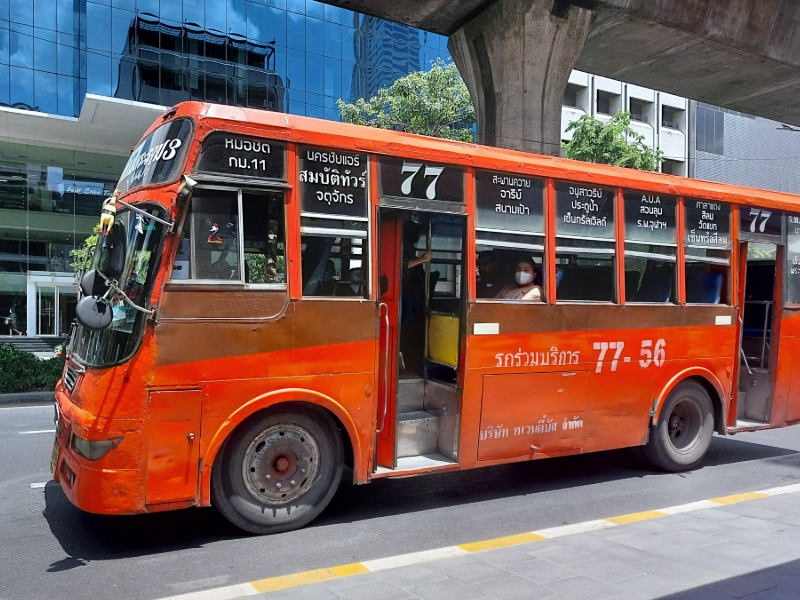
How to use the bus and buy tickets
There’s only one payment method for the bus fare in Bangkok as a foreign visitor and that is by cash. The way you go about getting a ticket is as follows:
- Wave at the incoming bus and once it stops, get onboard as fast as possible.
- Take one of the seats, or if no seats available move as much to the back as possible and hang on to the rails.
- The bus conductor will come to you and you tell them where you want to go. Since everything’s in Thai, it’s a good idea to show where you need to go on your phone on Google Maps. When you’ve paid you’ll receive a bus ticket. Keep this with you until the end of your trip.
Bus fares differ between the route and the type of bus you use. Expect to pay around 10 to 25 baht per ride.
Pro tip: Make sure you pay the fare as exact as you can and avoid using 100 baht notes or higher. Pay with small notes or coins and keep the flow going.
Chao Phraya River Boats
Coming back to the topic of old town. Aside from using the bus there’s another mode of public transport available: the river boat. There are many sights and attractions along the riverside and the long-tail boats provide a quick way to get there.
There are multiple boats available with different colored flags. Some are express boats, while others stop at all the piers. Navigating this one can be a hassle, but luckily Bangkok has come up with the Blue Flag boat. This is basically a hop-on-hop-off boat for tourists and it brings you to all the interesting spots along the Chao Phraya river.
How much is a (tourist) boat ticket
A day ticket for Bangkok’s blue flag boat costs 150 Baht per adult and a single ride costs 30 baht per adult. Tickets are available for purchase before boarding at each stop. It’s also a great way to cruise the whole Chao Phraya river for cheap. Start at the very beginning of the line at Phra Arthit and then make your way down the river and end your trip at the Icon Siam Mall or Asiatique!
The other boats are mostly for local commuters and don’t make a lot of sense to use.
Pro tip: If you want to go from Wat Pho to Wat Arun of vice versa than make you way to the Tha Tien pier. Here you can take the small crossing boat for about 5 baht per person and the ride only takes about 5 minutes. Read about these temples and other must-see sights in our 24 Hours in Bangkok guide
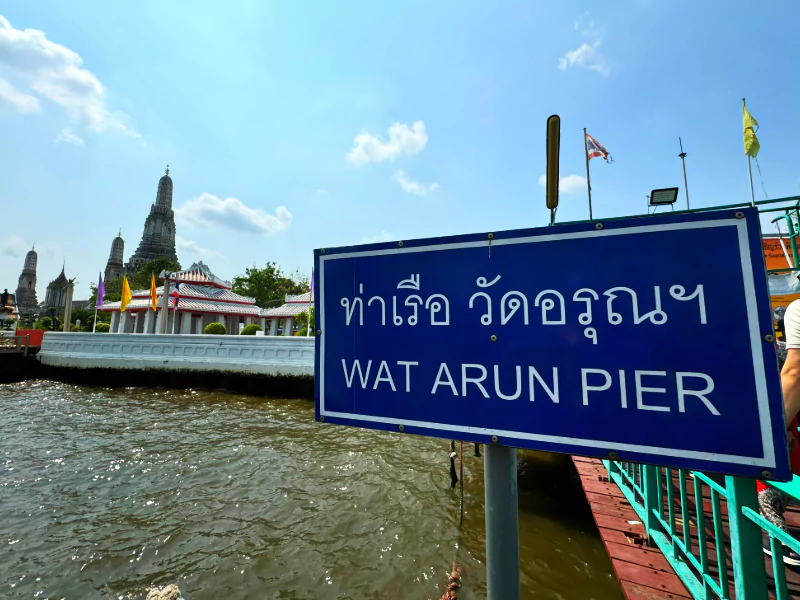
Khlong Sang Saep – Canal Boats
Staying on the water, aside from the Chao Phraya River, Bangkok has many of canals too. And you can navigate these with one of the Khlong Canal boats. This is a great and unique way to get from Sukhumvit towards old town minus all the traffic.
But keep in mind that these boats are used a lot during rush hour and the boats will reach (over) capacity fast. So definitely go off-peak if you want to have a safe and seated ride.
How to buy Khlong Sang Saep Tickets
The boats are a fun way to discover a side of Bangkok that would otherwise remain unknown and it’s not something that many tourists get around doing. Fares are affordable too and they range between 12 to 22 baht. Just like on the bus, you’ll buy the tickets from the conductor once you’ve seated.
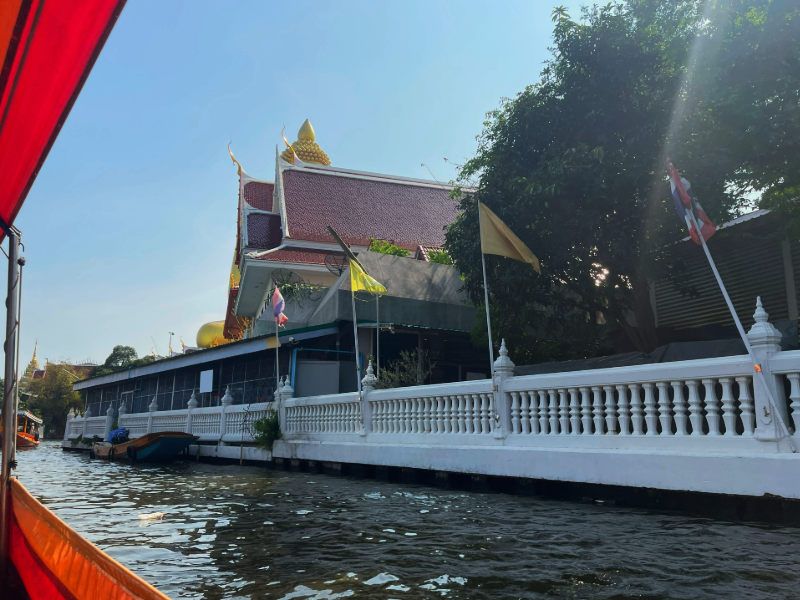
The Airport Rail Link
As for the last mode of transport in Bangkok we’re taking a look at the Airport Rail Link. While at first you might guess that Bangkok Suvarnhabhumi Airport is connected to the BTS or the MRT, that is wrong. It’s connected to its very own rail track and is aptly called the Airport Rail Link.
How to use the Airport Rail Link
To use it you go all the way down to the basement level of the airport and there you can buy a token on one of the machines. The machines take cash only, so come prepared.
From there on you can zoom into Bangkok and get off at either Station Makkasan and connect to the Blue MRT Line or get off at the end of the line at Phaya Thai, and from there you can connect to the Green BTS line.
Fares for the Airport Rail Link vary between 35 to 45 baht per person, depending on where you need to go.
For more information about of the Airport Rail Link, check-out our step-by-step guide.
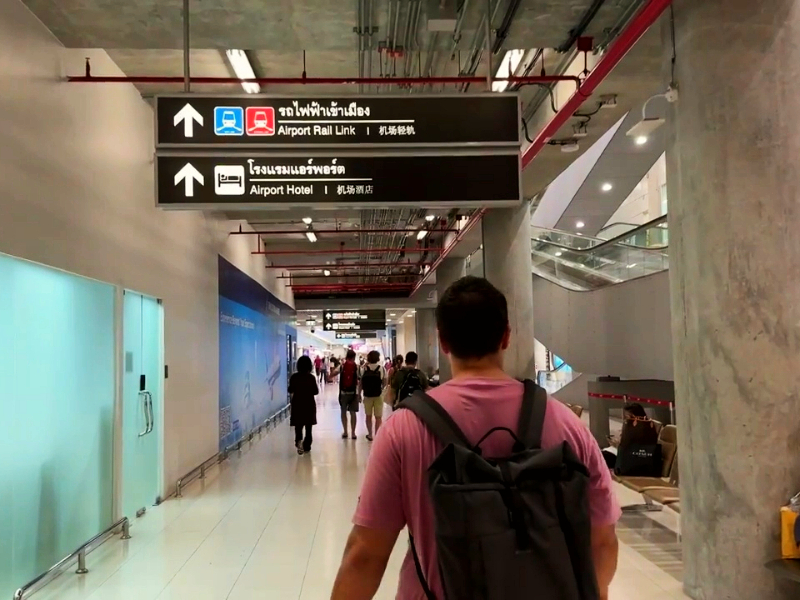
Happy Bangkok Travels!
That’s it, these are all the various ways of how you can get around Bangkok by public transport. We especially recommend using one of the many transport options to avoid Bangkok’s traffic, or if you’re looking to get a local feel of the city.
If you haven’t already, then be sure to read our Bangkok Arrival Guide for first time travelers.
Enjoy your travels and thanks for reading!
Laurens & Laura
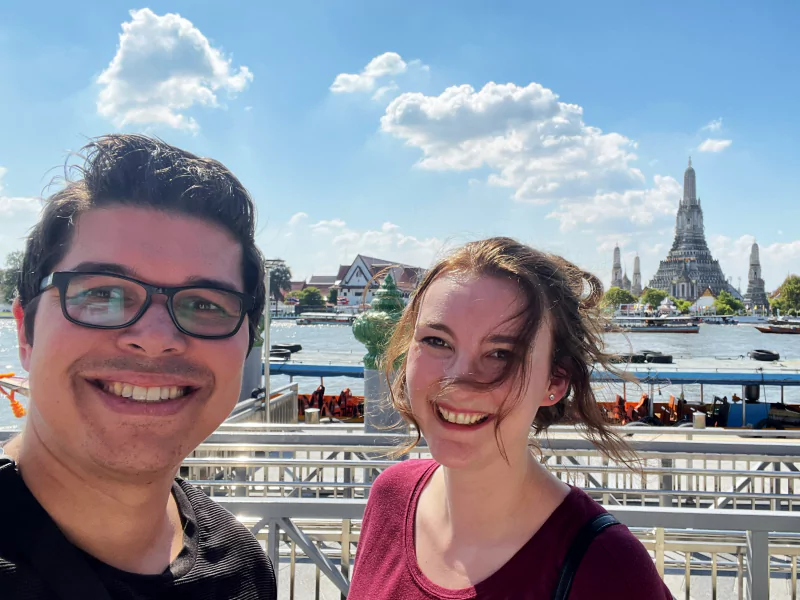

Laura is the co-founder of Yes and Explore and a travel professional with over 10 years of experience in the tourism industry. She loves sharing her insider knowledge and practical tips to help you make the most of every trip.

